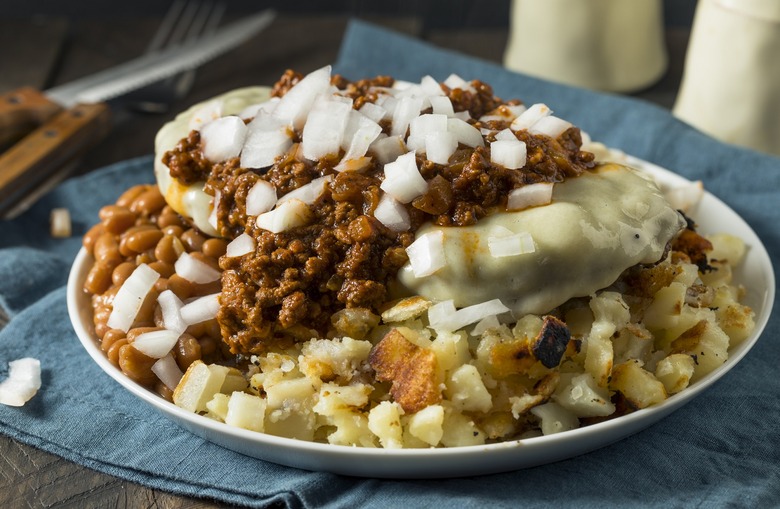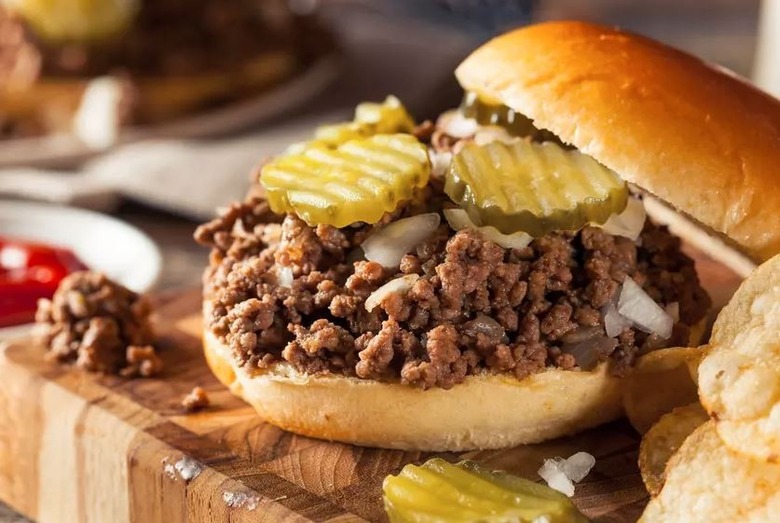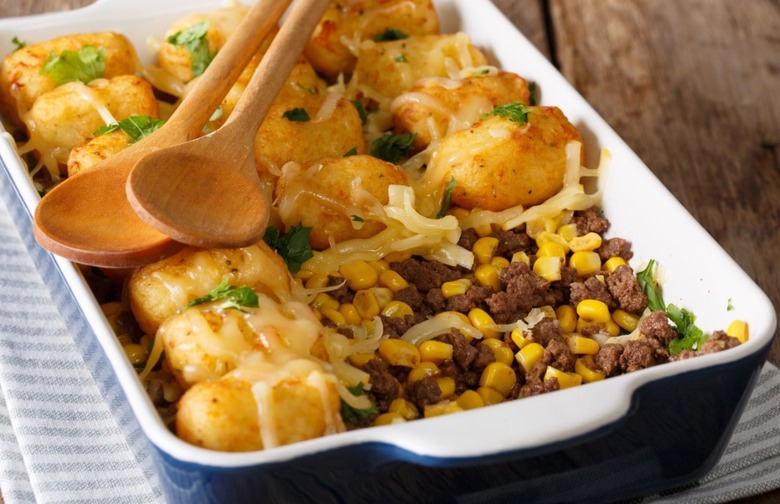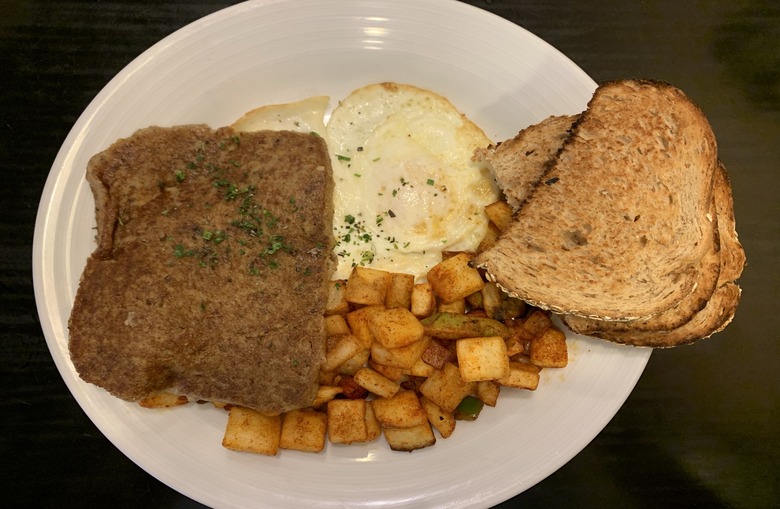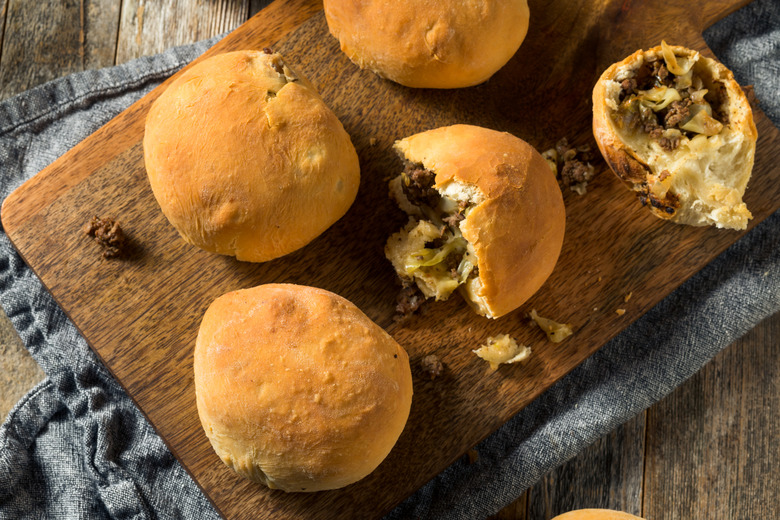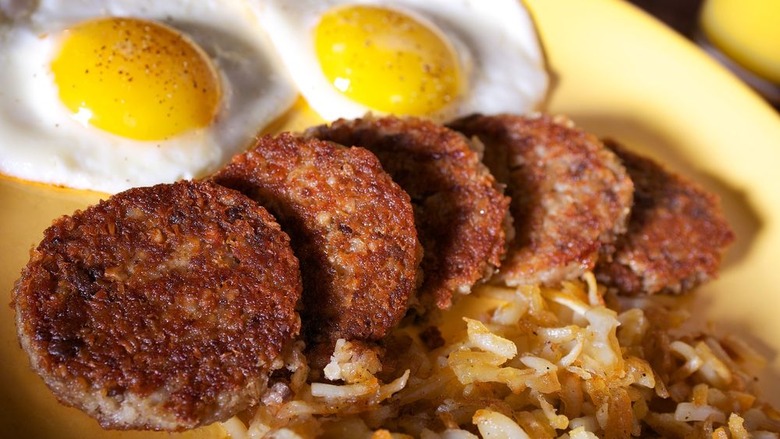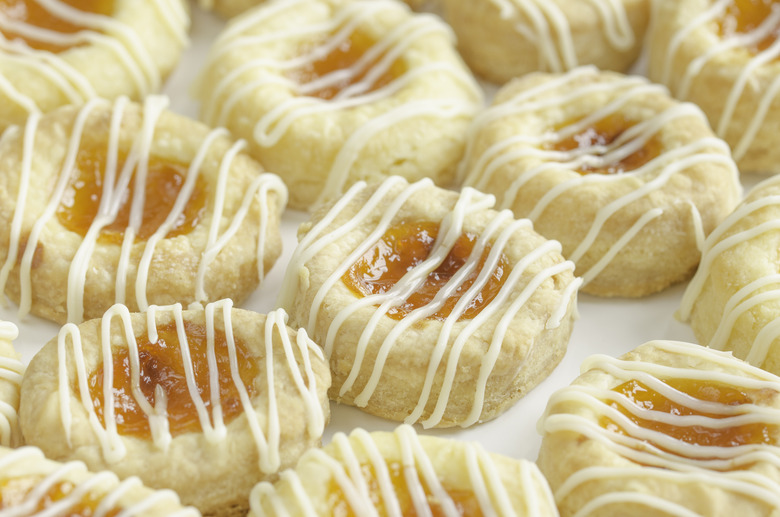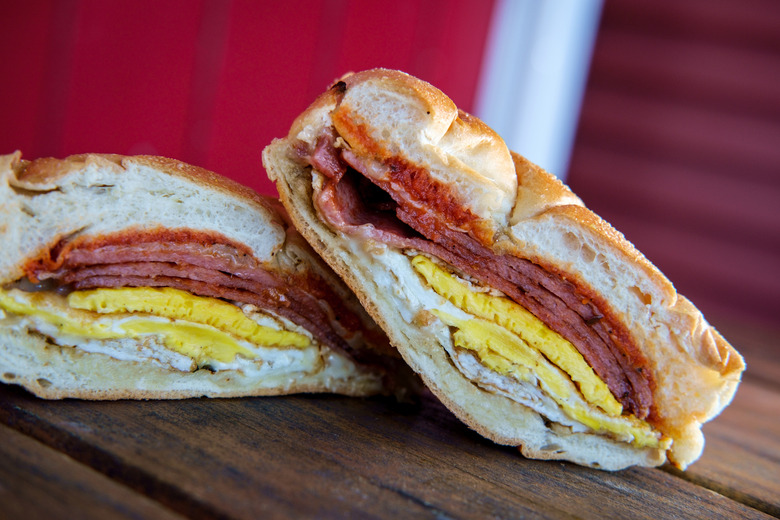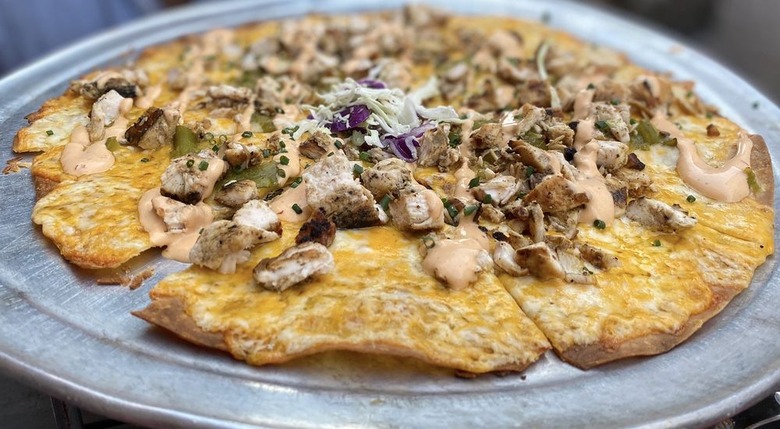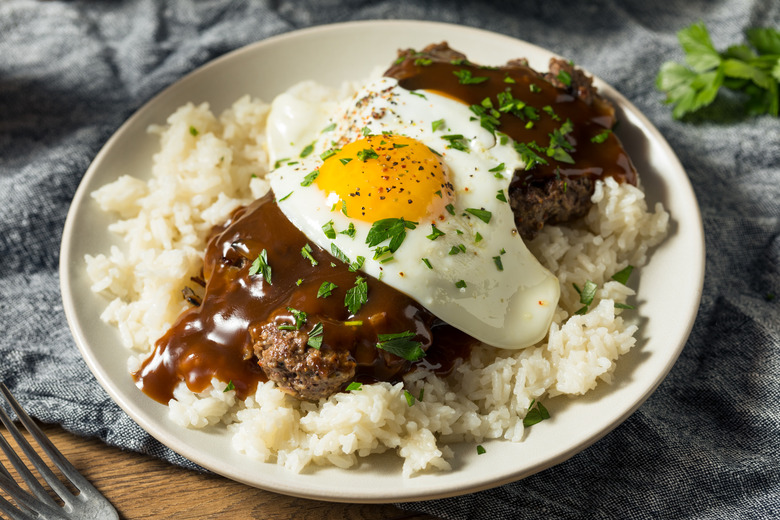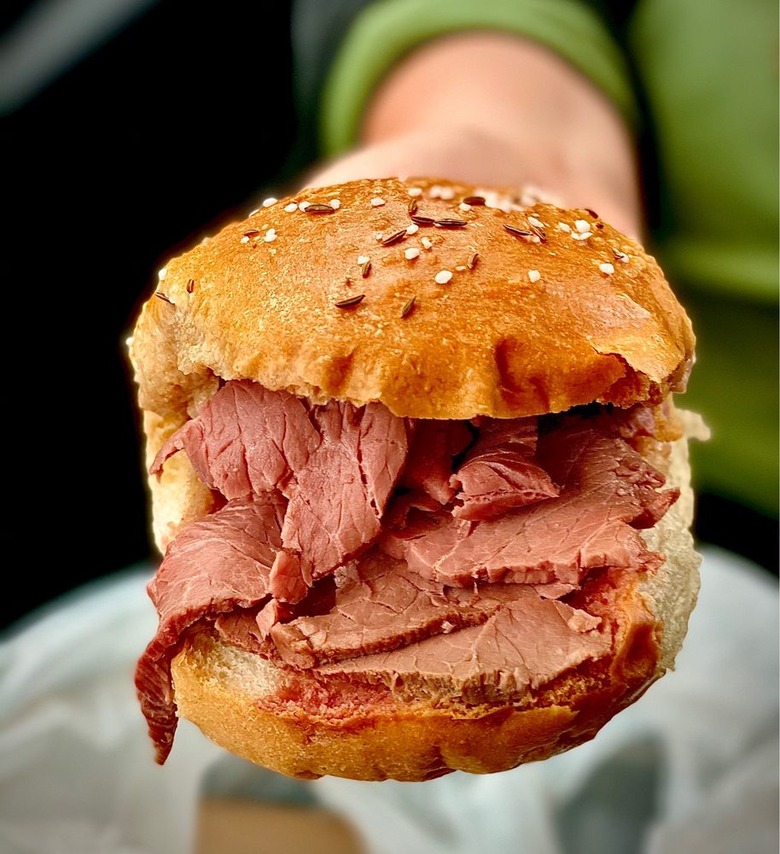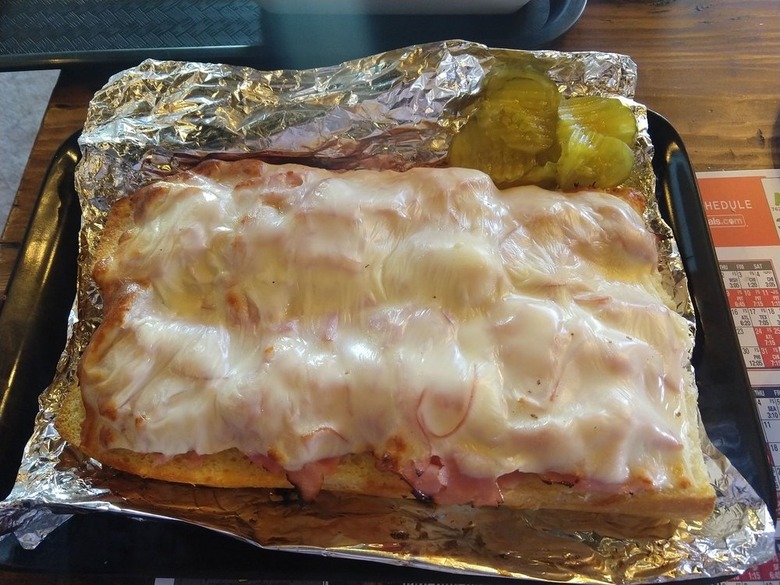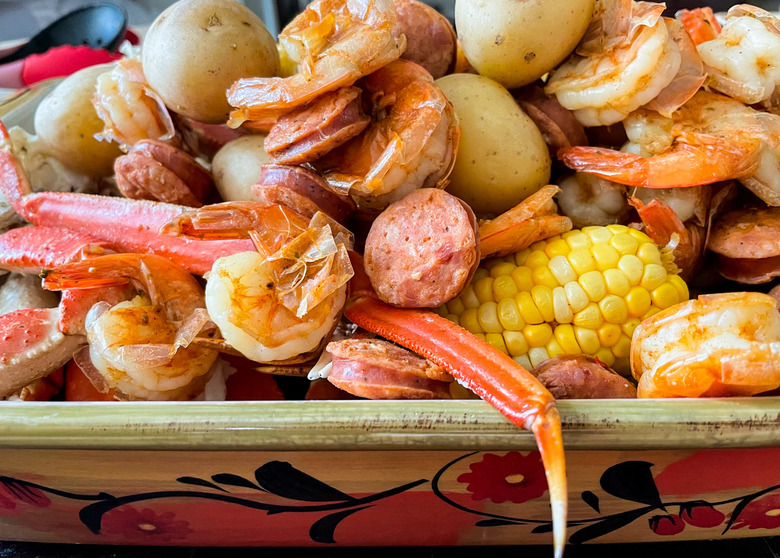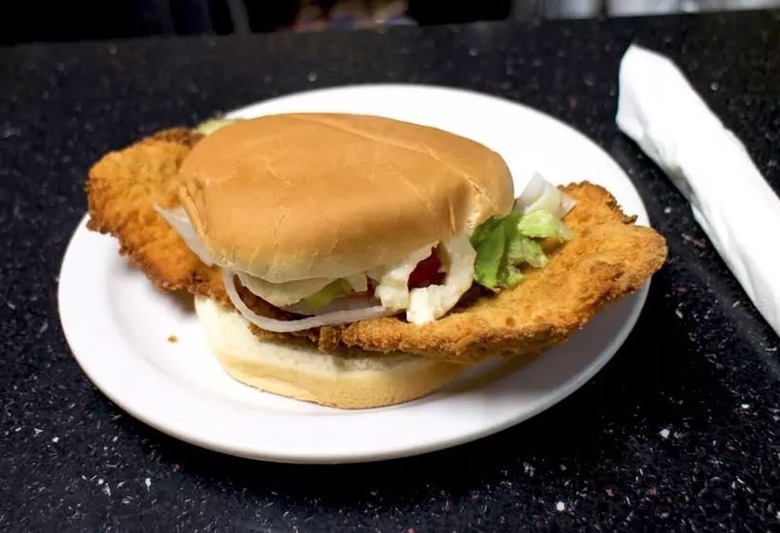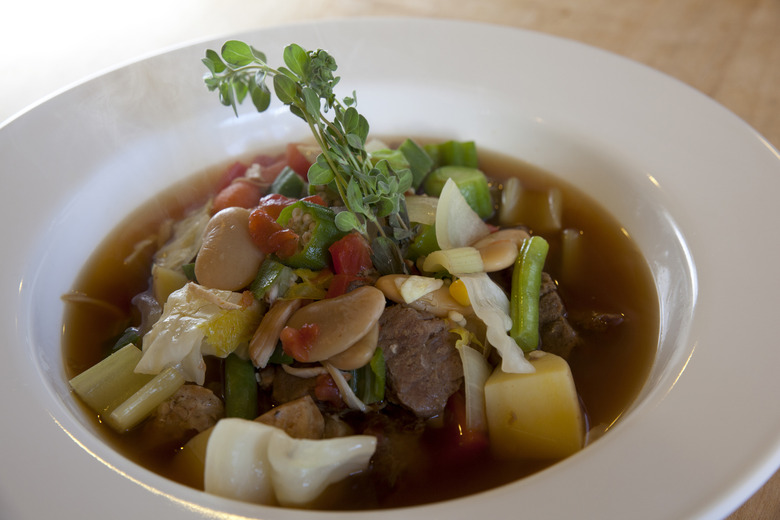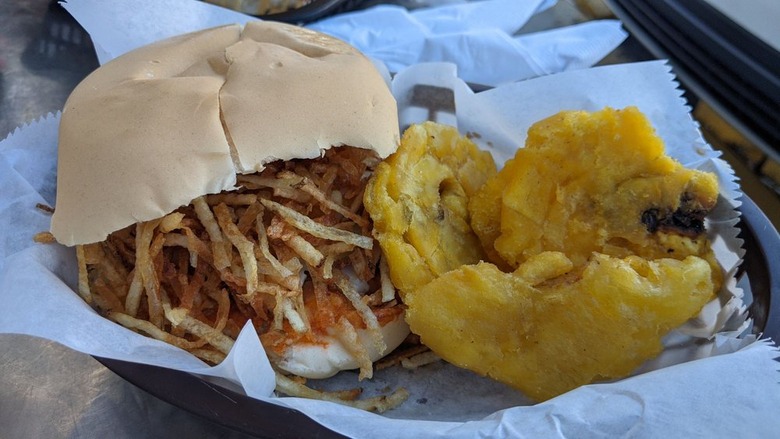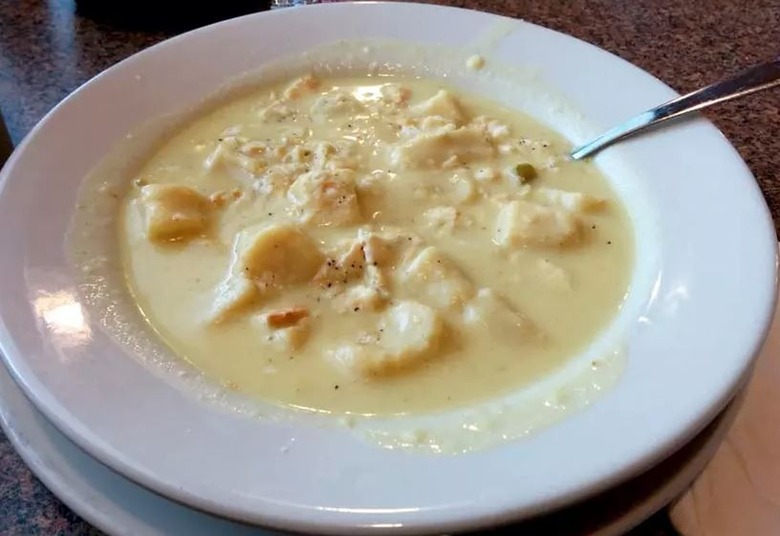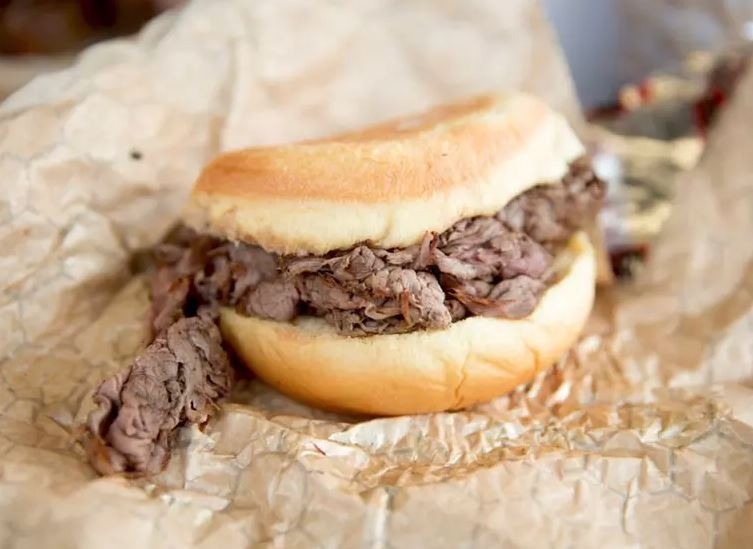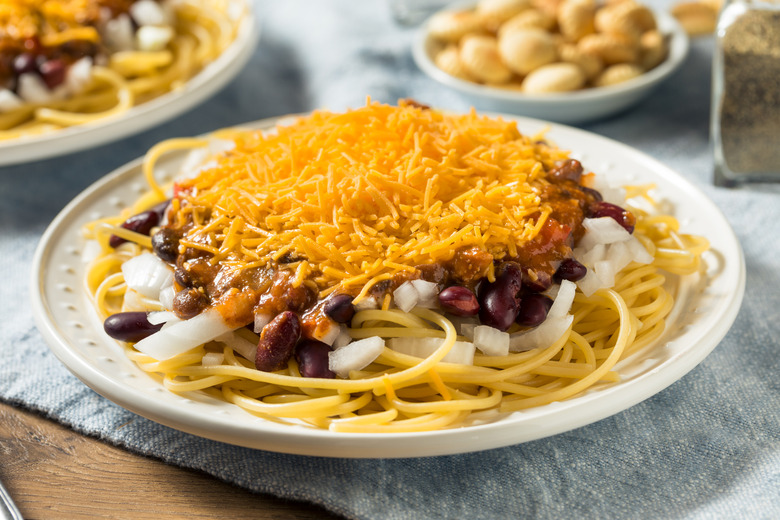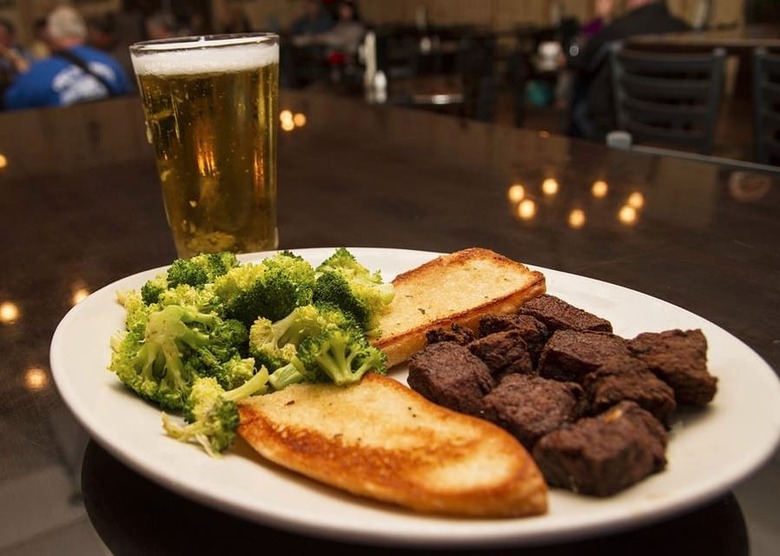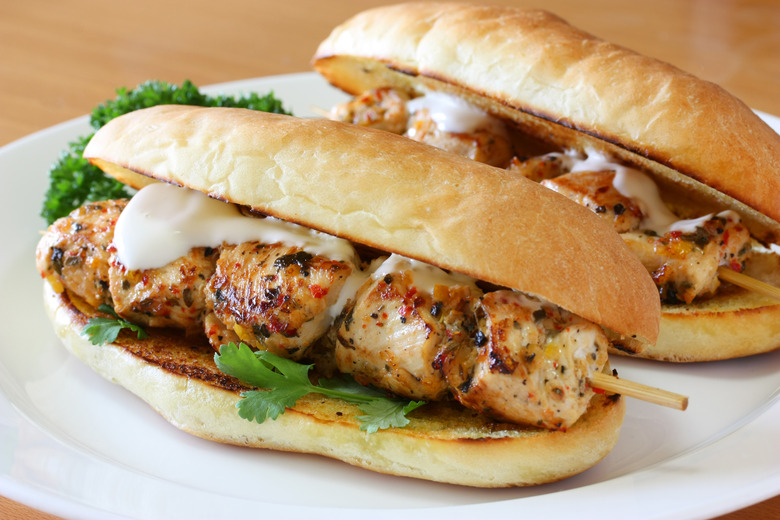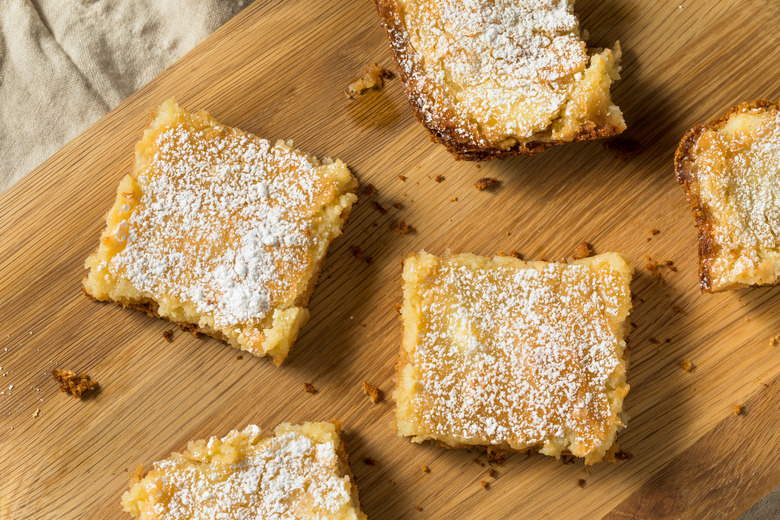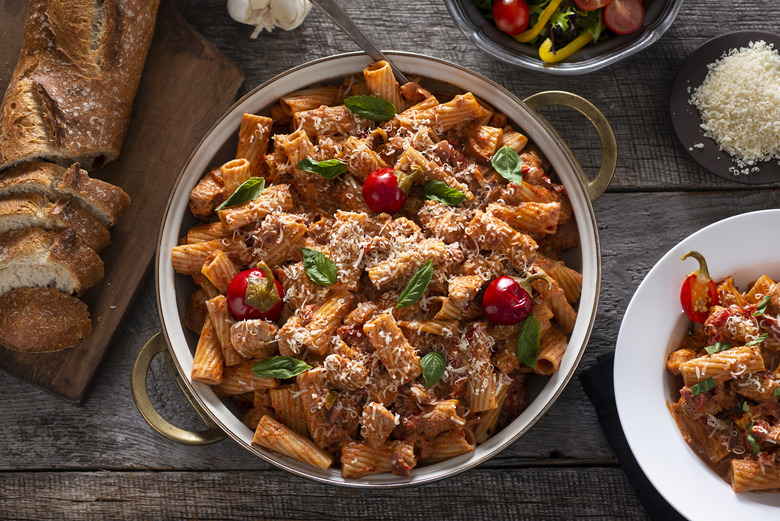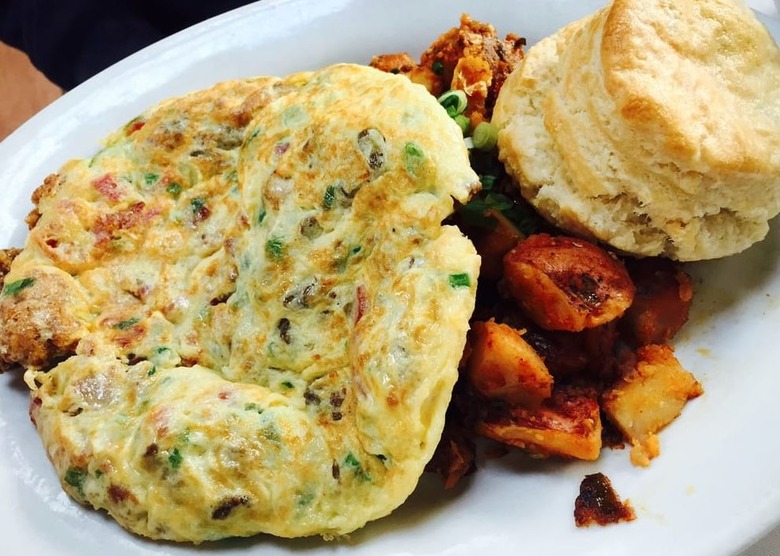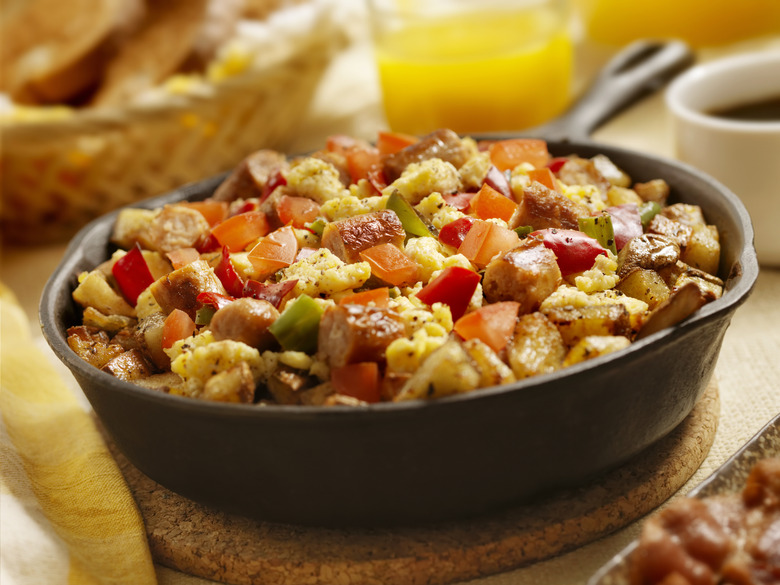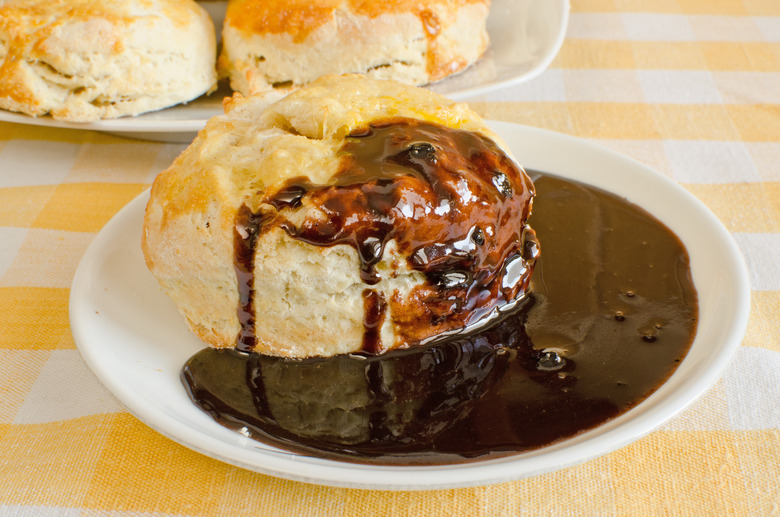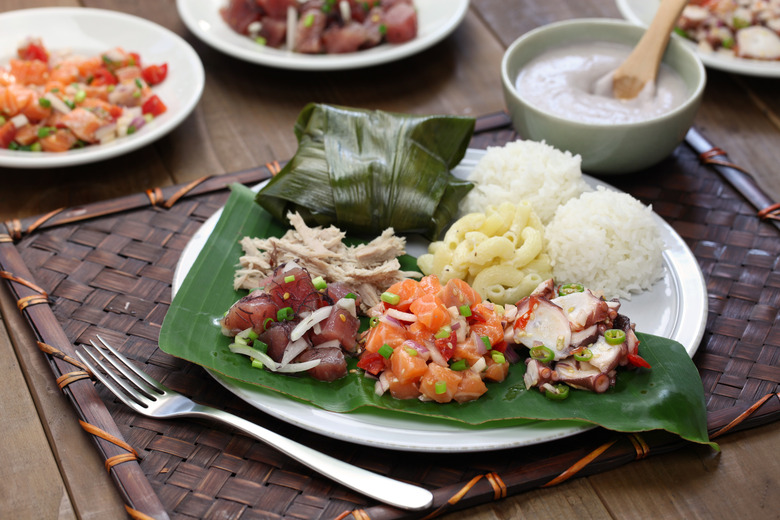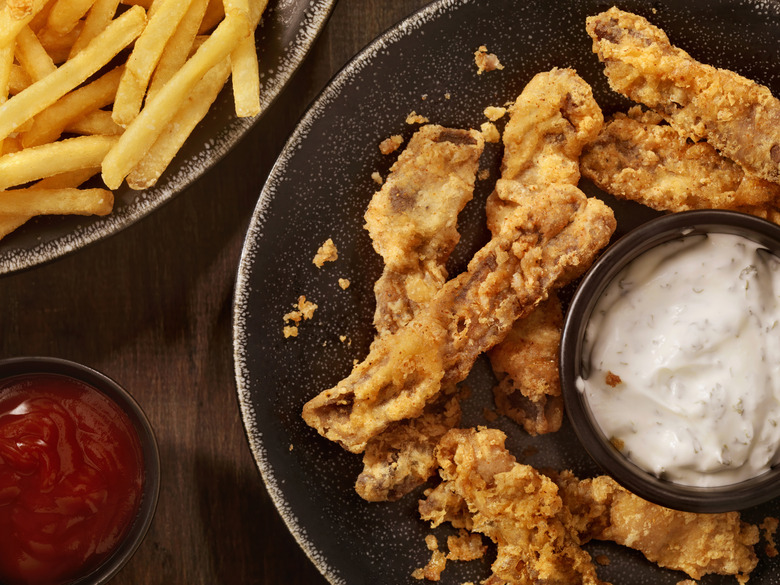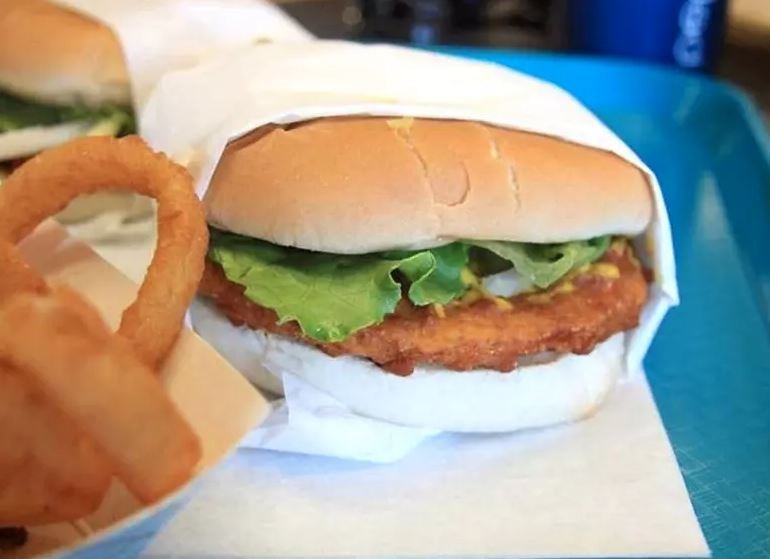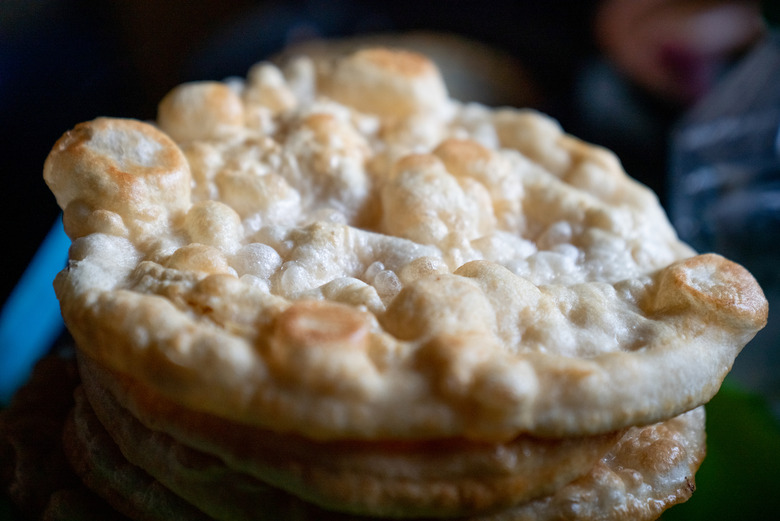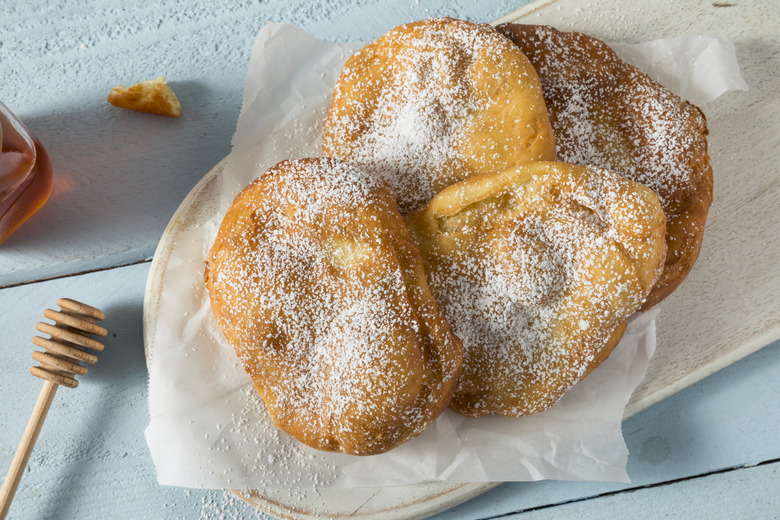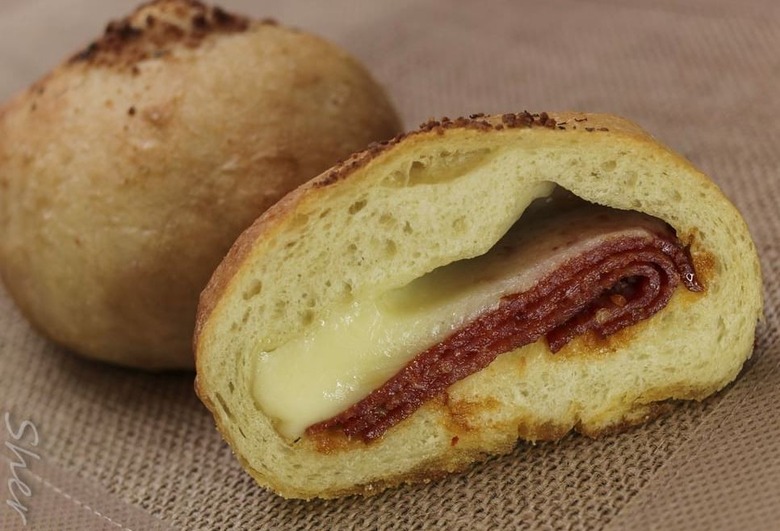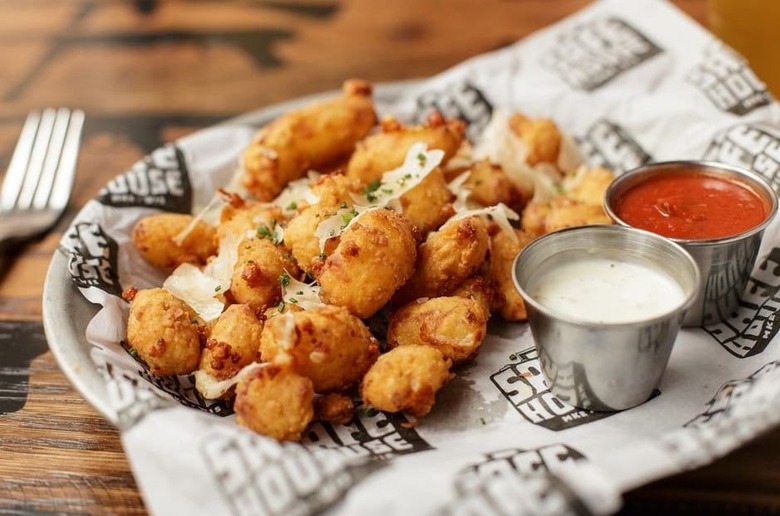Regional Dishes You've Never Heard Of
Nowadays, it seems like you can track down just about any type of food you want, especially if you live in a big city. While it may seem like it's possible to get any food you can think of delivered to your door, there are still plenty of foods out there that most Americans don't even know exist. It's a big country out there, and there's still plenty of food that's known and beloved only by the lucky locals. Here are a few of them.
Loose meat
Also called a tavern sandwich, the loose meat sandwich is an Iowa specialty is what you might think of as a cross between a burger and a sloppy joe, and it's a dish you'll only find in the Midwest. Instead of being formed into a patty, ground beef is cooked into small crumbles, simply seasoned and occasionally mixed with onions, and then scooped onto a bun. Taylor's Maid-Rite in Marshalltown, Iowa, is the restaurant that's best known for this messy and delicious creation.
Hotdish
If you're going to a church supper, potluck, or family reunion in Minnesota and other parts of the Upper Midwest, you're most likely bringing a hotdish. This infinitely versatile casserole is usually made by mixing meat, vegetables and a binder together and topping it with tater tots. The result is usually something along the lines of ground beef, canned green beans, and canned cream of mushroom soup. While there are countless variations, you always know a hotdish when you see one.
Scrapple
In the Mid-Atlantic states including Pennsylvania, Maryland, and Delaware, a traditional food of the Pennsylvania Dutch is easy to track down: scrapple. This diner staple is made by combining pork scraps and trimmings with cornmeal and seasonings, blending it into mush, forming it into a loaf, letting it congeal, then slicing and pan-frying before serving. If you find it at a store near you, this is definitely a regional breakfast food worth trying.
Runza
There are numerous locations of the beloved chain Runza in Nebraska, Colorado, Iowa and Kansas. Outside of that you're simply not going to find their namesake item. Reminiscent of a (much better) Hot Pocket, the runza is a hot stuffed sandwich with Russian and Germanic origins, with the dough completely enveloping the filling. The original runza is filled with a mixture of ground beef, onions and cabbage, but the chain also sells them in cheese, Swiss mushroom, cheeseburger and barbecue bacon varieties.
Goetta
Pronounced "get-uh," this Ohio specialty was invented by German immigrants in Cincinnati in the 19th century. It's essentially a thick raw sausage made with ground pork, whole grain steel-cut oats and spices like rosemary, bay leaves and thyme. Goetta is traditionally sliced and fried in a pan, and can be eaten by itself or served with ketchup, mustard, apple butter, syrup, honey or grape jelly. Glier's, the largest commercial producer, makes more than 1 million pounds annually.
Kolaches
Kolaches are a type of filled dough with Czech roots that have become very popular in Texas, Iowa, Wisconsin and Minnesota. The majority of the ones you'll find envelop a dollop of fruit with soft, semi-sweet dough and are eaten for dessert or as a breakfast pastry, but some also include meat, bacon, eggs or whatever else the baker wants to include.
Taylor ham, egg and cheese
The pork roll, also known as Taylor ham, is a thing of pride for New Jerseyans, who know that in the canon of breakfast meats, it's right up there with bacon. It's a slightly smoky sausage that resembles bologna, and it's typically sliced and pan-fried or grilled before being partnered with egg and cheese on a roll, in a crazy-good gutbuster of a sandwich known as the Jersey Breakfast. It's one of a handful of foods that only people from New Jersey know about.
Cheese crisp
Visit almost any Mexican restaurant in the Phoenix area, and you'll find an intriguing-sounding appetizer on the menu: cheese crisp. Order it and at first glance, you might think that a pizza is being brought to your table. Actually, it's a massive four tortilla topped with shredded cheese and broiled until the cheese melts and the edges crisp up, sliced into wedges. It's one of the best dishes for cheese lovers for sure.
Loco moco
Loco moco is a Hawaiian invention and makes for a great late breakfast after a morning of surfing. It starts with a foundation of white rice, which is then usually topped with a hamburger patty or two, fried eggs, and brown gravy. It's open to interpretation, however, and the burger patties can be replaced with anything from bacon and SPAM to chili, kalua pork and shrimp.
Beef on weck
A roast beef sandwich that's worthy of the dinner table, beef on weck is a hallmark sandwich of the Buffalo, New York area. It starts with rare, thinly sliced roast beef tucked into a roll called a kummelweck, which has been dusted with coarse salt and caraway seeds. The top bun gets a dip in beef juice and the only condiment is a hefty spoonful of horseradish. It's an under-the-radar sandwich that should get a lot more attention than it does.
Gerber sandwich
Reportedly invented in 1973 at a St. Louis deli by a customer named Dick Gerber and now found at many Missouri restaurants, the Gerber sandwich is an open-faced sandwich that starts with a halved loaf of Italian or French bread, smeared with garlic butter, topped with ham, cheese — usually provolone or Provel — and some paprika, and then toasted.
Frogmore stew
This classic Lowcountry, South Carolina, dish, also called Low Country boil or Beaufort stew is the perfect way to enjoy the region's ample culinary offerings. The main ingredients of Frogmore stew are fresh Carolina shrimp, yellow corn, redskin potatoes and smoked sausage, but some variations also include blue crab or stone crab claws. Typically this stew is with seasoned Old Bay, beer and hot sauce. Like most standard seafood boils, it's dumped out onto a newspaper-topped table and served on paper plates with plenty of cold beer.
Garbage plate
Insanely popular in the Rochester, New York, area but little-known outside of it, the garbage plate gets its name because of the huge quantity and variety of food piled onto a plate. Widely credited with being created at a restaurant called Nick Tahou's Hots, garbage plates start with either baked beans or macaroni salad. Then, home fries or french fries are added and topped with your choice of hamburger, cheeseburger, Italian sausage, red or white hots, chicken or steak. But we're not done. It's also topped with Rochester hot sauce, a spicy meat sauce, and you can also add onions and mustard. You can get this whole thing served with a side of buttered bread. Hangovers be damned.
Pork tenderloin sandwich
In Iowa, Indiana and southwestern Ohio, pork loin is turned into one of the best sandwiches you'll ever find, all thanks to some pounding and deep-frying. A 4-ounce slice of lean center-cut pork loin is first pounded thin, then marinated in buttermilk, eggs and flour, and finally breaded in saltine crumbs and deep-fried. It's served on a 5-inch plain hamburger bun with onion, pickles, lettuce, ketchup, mayonnaise or mustard.
Burgoo
Burgoo is a regional Kentucky specialty that you'd be hard-pressed to find outside of the state, but it's absolutely iconic. So when you're there, make sure you eat some of this thick, hearty soup usually made with multiple types of meat. The origin of this spicy stew is unclear, but it has reportedly been around since the early 1800s. Today it is a popular dish to feed a large crowd at the Kentucky Derby and pair with some barbecue.
Frita cubana
The frita is a perfect representation of the American influence on Cuban culture and vice versa. It was created in Cuba and brought over to the States, specifically Miami, after the Cuban revolution. Here's the breakdown: A fresh-ground patty of spiced beef is pressed flat onto the griddle along with some diced onions and a spicy tomato sauce, then tucked into a fresh Cuban roll. It's topped with shoestring potatoes, more diced onion and a squirt of ketchup. It's unlike any other burger you'll ever try.
Knoephla
If the word "knoephla" doesn't ring any bells, then you probably haven't been to North Dakota. So what is knoephla? It's a thick and creamy soup made with chicken stock and chewy, dense knoephla dumplings. It also contains celery, carrots and potatoes. This potato soup can trace its roots to Germany.
Pit Beef
Baltimore's best-known native sandwich is without a doubt the pit beef sandwich. A pit beef sandwich is made by grilling top round beef over charcoal and then slicing it into thin strips to be served on a Kaiser roll or white bread with a horseradish sauce.
Cincinnati-style chili
There are hundreds of chili parlors in Cincinnati and there are specific ways of ordering your in this town. A two-way is a bed of spaghetti topped with beefy, umami-rich chili made with a bevy of spices including cinnamon, allspice and cumin. Three-way adds thinly-shredded cheddar along with the spaghetti and chili and is the most famous way to eat this dish; four-way adds onions or beans; five-way adds both beans and onions. It's common for this chili style to be used as a topping on coney dogs.
Chislic
Not found too often outside South Dakota, chislic is a dish of cubed red meat, usually beef, mutton or venison that is deep-fried or grilled and served on skewers. The curious name is an Americanization of shashlik, which is the Russian word for skewer pork.
Spiedies
Spiedies are iconic for people who live in Upstate New York, particularly in Binghamton. It is made of cubed marinated meat — usually chicken, beef, pork or lamb — that is grilled on skewers and then loaded into soft Italian bread.
Gooey butter cake
Head to St. Louis and you'll find one of the most fittingly-named foods around — gooey butter cake. The flat, dense cake originated in the 1930s and is a mixture of flour, butter, sugar and eggs. This sweet treat is baked and dusted with powdered sugar to create a dessert that's easy to make with just a few ingredients.
Chicken riggies
The Utica, New York, area was home to a booming Sicilian population in the early 1900s, and many traditional Italian dishes took on a regional life of their own. Chicken riggies is a pasta dish made with chicken, rigatoni pasta and hot or sweet peppers in a spicy and creamy tomato-based sauce.
Hangtown fry
Hangtown fry, a Northern California specialty, is the Gold Rush's most enduring culinary contribution. It was created in the mining town of Placerville, California — then called Hangtown — after a just-got-rich miner walked in and asked for the most expensive dish the kitchen could make. The chef whipped up an omelet, using eggs, bacon and oysters. The dish remains largely the same today as it did during the Gold Rush, though sometimes onions, bell peppers and spices are added.
Hopple popple
A Midwestern breakfast specialty, hopple popple is what results when you add eggs, cheese, potatoes, onions, herbs, vegetables and any type of breakfast meat to a pan and let it all cook together. The resulting casserole, which is actually German-inspired, is essentially the ultimate breakfast hash.
Biscuits with chocolate gravy
Biscuits and gravy is a classic Southern staple, but in the Ozarks and Appalachia, you'll find a curious regional anomaly: biscuits with chocolate gravy. The standard recipe starts like most biscuit-bound gravies, with roux and milk. But the recipe takes a sharp left turn after that, adding cocoa powder, sugar and vanilla extract. It's sweet and chocolatey, and actually makes a lot of sense atop biscuits when you think about it. This gravy is usually whipped up at home, but plenty of restaurants serve it as well.
Plate lunch
A Hawaiian specialty, the plate lunch is customizable, but it always contains a protein — roast pork, hamburger patty, kalua pork, pork adobo, beef teriyaki or Portuguese sausage — two scoops of rice and one scoop of macaroni salad or slaw. It's exactly as filling as it sounds and even more delicious.
Finger steaks
Finger steaks are a uniquely Idaho creation, similar to chicken fingers but made with beef instead. It may sound strange, but when done well, it's tender and crispy. The most legendary place to order this regional specialty is at Boise's West Side Drive-in. To make this treat, lean beef steak strips are dunked in a batter made with plenty of garlic, pepper and beef bouillon and fried for just 30 seconds. The kicker? They're dunked in cocktail sauce or fry sauce.
Pork chop sandwich
A creation similar to, but totally different from, a breaded pork tenderloin sandwich, the fried pork chop sandwich has established itself as one of Montana's signature foods. A pork chop sandwich is a lean slice of boneless pork loin, dunked in a cornmeal batter and fried, then put in a bun and topped with mustard, pickle and onion.
Fry bread
Fry bread is actually the official state bread of South Dakota and can trace its origins to the rations provided by the federal government to Native Americans in the mid-1800s — namely flour, lard, salt, yeast, powdered milk and sugar. The state's large Sioux population took to frying the dough in the lard, resulting in a fluffy, flat, slightly chewy bread with a golden-brown crust. Nowadays, you can find fry bread all throughout the region and especially in Oklahoma. The two most popular variations are sweet, with cinnamon and sugar and a Navajo taco — topped with ground beef, lettuce, tomatoes, salsa and sour cream.
Utah scones
You probably think of scones as a dense, sweet biscuit usually served with English tea, but in Utah, they're something completely different. These scones are made out of a sweet, yeast-leavened dough that's deep-fried and usually topped with honey, butter, syrup or powdered sugar. You'll find them in restaurants throughout the state.
Pepperoni rolls
The pepperoni roll is the definitive snack food of West Virginia. It's a no-frills bread roll filled with either sticks or slices of pepperoni. When baked, some of the spicy oil from the pepperoni seeps into the surrounding bread, resulting in a hearty and delicious nosh. Some contain cheese, some are served warm instead of room temp, some contain shredded or ground pepperoni. You can find pepperoni rolls everywhere from gas stations to fine-dining spots.
Fried cheese curds
In Wisconsin, cheese is a way of life and it's the top state in the country for tracking down cheese curds, chunks of super-fresh, mild cheese that "squeak" when you bite into them. They're also a primary component of poutine. When you coat cheese curds in a batter and deep-fry them, the end result is gooey, crispy, salty and satisfying. Deep-fried cheese curds are one of the unofficial state foods of Wisconsin and they're something that no visitor to the state should leave without sampling.
More from The Daily Meal:
The Most Iconic Food From Every State
Regional Breakfast Foods You Can Make at Home
The Most Iconic Dessert in Every State
The Snack Food That Defines Every State
Drive-In Restaurants You Can Still Pull Up To
